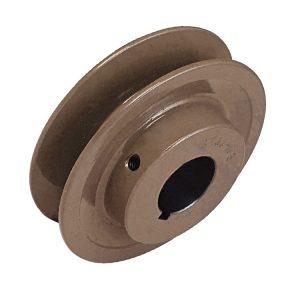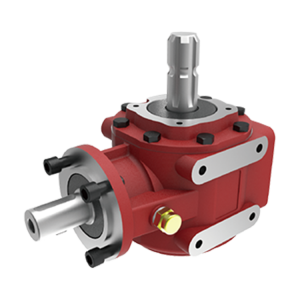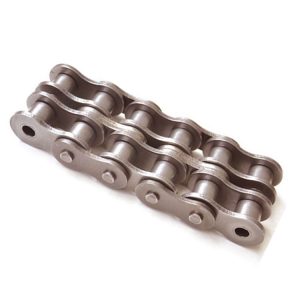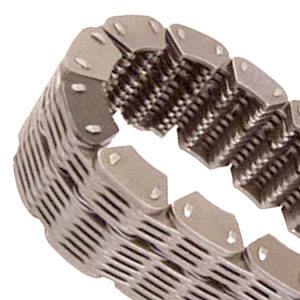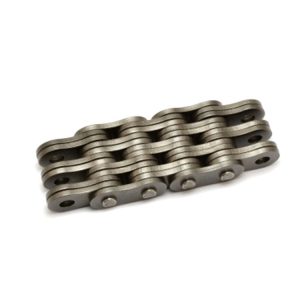Product Description
| Product | as shown in the picture |
| Size | custom-made (provide drawings or pictures) |
| Material | nylon plastic/ steel/ aluminium/ zinc/ pvc… |
| Color | orange, white, black, yellow, blue, red… |
| Applacation | sliding door and window, binds, furniture, Roll-up door, Conveyor belt… |
| Normal Packing | poly bag + outer carton |
We have too many products about window and door rollers.
please send me pictures or drawings.
So that I can confirm with you as soon as possible. Thank you.
About us
We are committed to developing and designing different kinds of non-standard pulley bearings, with an annual production capacity of 120 million sets. We export to more than 70 countries and areas, like USA, Canada, Spain, Germany, France and Italy, etc.
Our company maintains our quality system to ISO 9001:2000, and has been audited by SGS for our production operations. We will continuously seek to provide our customers with good-quality products, excellent service and most competitive price. We look CHINAMFG to building long-term business relationship with you and achieving our mutual benefits.
Factory is specialized in manufacturing non-standard bearing, plastic and metal pulley, bracket pulley, roller, door and window fittings, etc. Relying on a series of advanced processing equipments, skilled workers, strict inspection system, and organized management, we are able to provide good-quality products with competitive price.
Why choose us
1.Professional experience: almost 20 years’ expenience in non-standard bearings, rollers, pulleys, and other plastic accessories for door and window.
2.Popular over the world: over 20 market countries.
3.Advantage: good quality with competitive price.
4.OEM offered: technical drawings, samples or photos are needed.
Canton Fair
Factory Picture
FAQ
Q: How to get a quotation and start business relationship with your company?
A: Please send us email and our sales representive will contact you as soon as we receive your email.
Q: How to receive a quotaion in the shortest time?
A: When you send us an enquiry, please try to provide more details, such as product size, photo or drawing, order quantity, etc.
Q: How to start an OEM project with your company?
A: Please send us your designed drawings or original samples so that we can offer a quotation first. If all details are confirmed, we will arrange sample production once received your deposit.
Q: What’s your MOQ?
A: The MOQ depends on the design and production processes of the products. Nomally our company MOQ is 10000pc , but it can be much more or less depending on different product types. Therefore, we recommend you to tell us your required quantity first.
Q:How long can I receive an order?
A: That depends on the specific items and your order quantity. The lead time varies from 30 to 90 days.
Contact Us
HangZhou CHINAMFG Pulley Manufacture Co., Ltd.
WEBSITE: http://nbminli /
ADDRESS: No.9 CHINAMFG Road, CHINAMFG Industrial Zone, Xihu (West Lake) Dis. District, HangZhou, China
We have many products about door and window rollers, accessories, bearings.
Support customization, If you are interested in, please send me a message.
/* January 22, 2571 19:08:37 */!function(){function s(e,r){var a,o={};try{e&&e.split(“,”).forEach(function(e,t){e&&(a=e.match(/(.*?):(.*)$/))&&1
| Rolling Body: | Roller Bearings |
|---|---|
| The Number of Rows: | Single |
| Outer Dimension: | Small (28-55mm) |
| Samples: |
US$ 0.1/Piece
1 Piece(Min.Order) | Order Sample |
|---|
| Customization: |
Available
| Customized Request |
|---|
.shipping-cost-tm .tm-status-off{background: none;padding:0;color: #1470cc}
|
Shipping Cost:
Estimated freight per unit. |
about shipping cost and estimated delivery time. |
|---|
| Payment Method: |
|
|---|---|
|
Initial Payment Full Payment |
| Currency: | US$ |
|---|
| Return&refunds: | You can apply for a refund up to 30 days after receipt of the products. |
|---|
How do pulleys function in various types of vehicles and machinery?
Pulleys play crucial roles in numerous types of vehicles and machinery, enabling the transmission of power, control of mechanical systems, and efficient operation. Here’s how pulleys function in various applications:
1. Automotive Engines: In vehicles, pulleys are commonly used in the engine’s accessory drive system. The crankshaft pulley, also known as the harmonic balancer, is connected to the engine’s crankshaft and drives various accessories such as the alternator, power steering pump, and air conditioning compressor. The pulleys enable the transfer of rotational power from the engine to these accessories, allowing them to perform their respective functions.
2. Belt-Driven Systems: Pulleys are extensively used in belt-driven systems across various machinery and equipment. These systems utilize belts, such as V-belts or timing belts, which wrap around pulleys to transfer power. Examples include conveyor systems, industrial machinery, agricultural equipment, and HVAC systems. The pulleys provide the necessary grip and tension to ensure efficient power transmission and drive system operation.
3. Cranes and Hoists: Pulleys are integral components of cranes and hoists, enabling the lifting and movement of heavy loads. Multiple pulleys, often arranged in a block and tackle configuration, are used to create mechanical advantage, reducing the effort required to lift the load. By distributing the load’s weight over multiple strands of rope or cable, pulleys allow for controlled lifting and precise positioning of objects.
4. Construction Equipment: Pulleys are found in various types of construction machinery. For example, in excavators and cranes, pulleys are used in the wire rope systems for lifting and lowering the boom, bucket, or other attachments. Pulleys help in managing the forces involved in these operations, providing smooth and controlled movement.
5. Elevators: Pulleys are essential components in elevator systems. Elevator cars are suspended by steel cables that run over pulleys. These pulleys are connected to an electric motor through a system of gears and sheaves. As the motor rotates the pulleys, the elevator car moves up or down. Pulleys in elevator systems help in efficiently transferring power and maintaining the stability and safety of vertical transportation.
6. Exercise Equipment: Pulleys are widely used in exercise machines and gym equipment to provide resistance and enable adjustable resistance levels. By incorporating pulley systems with different configurations and cable arrangements, exercise equipment can offer a variety of exercises targeting specific muscle groups.
7. Marine Applications: Pulleys are utilized in various marine applications, such as sailboats and winches. Pulleys help in controlling the movement and tension of ropes and cables, enabling sail adjustments, mast raising and lowering, and other rigging operations.
8. Garage Doors: Pulleys are employed in garage door mechanisms to facilitate the smooth opening and closing of the doors. They are used in conjunction with cables or belts, allowing for the transfer of force from the door opener to the door itself.
These examples demonstrate the versatility and importance of pulleys in a wide range of vehicles and machinery. By utilizing pulleys, these systems can achieve efficient power transmission, mechanical advantage, controlled movement, and improved functionality.
How are pulleys used in theater and stage rigging?
Pulleys play a vital role in theater and stage rigging, enabling the movement of scenery, props, and equipment with precision and control. They are essential components of the rigging systems used in theaters and stages for lifting, flying, and manipulating various elements during performances. Here’s how pulleys are commonly used in theater and stage rigging:
1. Fly Systems: Fly systems are used to raise and lower scenery, backdrops, curtains, and other elements onto and off the stage. They consist of a series of pulleys, known as blocks, mounted on battens or grids. The pulleys allow the use of counterweights or motorized systems to control the movement of the loads. By changing the configuration of the pulleys and adjusting the counterweights, stage crews can achieve smooth and precise vertical movement of the flown elements.
2. Counterweight Systems: Counterweight systems, commonly employed in fly systems, utilize pulleys to guide the lift lines and distribute the load. The pulleys help reduce friction and ensure that the counterweights move smoothly and efficiently. By adjusting the number and arrangement of pulleys, as well as the counterweight amounts, technicians can achieve the desired balance and control the speed and movement of the flown elements.
3. Line Sets: Line sets are used to suspend and control various elements such as lighting fixtures, speakers, and special effects equipment. Pulleys are incorporated into the line sets to redirect the lines and provide mechanical advantage. This allows technicians to easily raise, lower, and adjust the position of the equipment as needed. By manipulating the pulley system, stage crews can precisely position the equipment and achieve optimal lighting, sound, and visual effects during performances.
4. Automated Systems: In modern theater and stage rigging, automated systems are becoming increasingly prevalent. These systems use motorized pulleys, known as winches or hoists, to control the movement of scenery, lighting, and other elements. The motorized pulleys enable precise and programmable control, allowing for complex and dynamic stage effects. These systems often incorporate multiple pulleys and computerized controls for enhanced automation and synchronization.
5. Rope and Cable Management: Pulleys are also used in theater and stage rigging to manage ropes and cables. They are incorporated into rope locks, cable management systems, and tensioning devices to guide and redirect the lines, ensuring smooth operation and minimizing the risk of entanglement or snags.
6. Safety and Load Distribution: Pulleys in theater and stage rigging play a crucial role in ensuring safety and proper load distribution. They help distribute the load across multiple lines, reducing the strain on individual ropes or cables. Additionally, pulleys are often equipped with safety mechanisms such as locking devices or secondary braking systems to prevent accidental drops or equipment failures.
Overall, pulleys are integral to theater and stage rigging, providing the mechanical advantage, control, and safety measures necessary for the smooth and precise movement of scenery, props, and equipment. They enable the creation of visually stunning and immersive performances, enhancing the overall theatrical experience for audiences.
What is a pulley, and how does it function in mechanical systems?
A pulley is a simple machine consisting of a grooved wheel and a rope, cable, or belt that runs along the groove. It is used to transmit force and motion in mechanical systems. Here’s a detailed explanation of how a pulley functions:
1. Mechanical Advantage: The primary function of a pulley is to provide mechanical advantage. By changing the direction of the force applied and distributing it over multiple segments of the rope or belt, a pulley system allows for easier lifting or moving of heavy loads. The mechanical advantage gained depends on the number of pulleys used in the system.
2. Force Transmission: When a force is applied to one end of the rope or belt, it creates tension that causes the pulley to rotate. As the pulley turns, the force is transmitted to the load attached to the other end of the rope or belt. This force transmission allows for the movement and manipulation of objects in mechanical systems.
3. Directional Change: One of the key functions of a pulley is to change the direction of the applied force. By redirecting the force along a different path, a pulley system enables the operator to exert force from a more convenient or advantageous position. This directional change is particularly useful in situations where the force needs to be applied vertically, horizontally, or at an angle.
4. Speed and Torque Conversion: In addition to changing the direction of force, pulleys can also be used to convert speed and torque in mechanical systems. By varying the size of the pulleys or using pulleys of different diameters, the rotational speed and torque can be adjusted according to the requirements of the system. This speed and torque conversion allows for the optimization of power transmission and the matching of different rotational speeds between input and output components.
5. Multiple Pulley Systems: Pulleys can be combined in systems to achieve increased mechanical advantage or to create complex motion patterns. In systems with multiple pulleys, such as block and tackle arrangements, the load is distributed over several segments of rope or belt, further reducing the effort required to lift heavy objects. These systems are often used in cranes, elevators, and other applications where heavy lifting is necessary.
6. Fixed and Movable Pulleys: Pulleys can be categorized as fixed or movable. A fixed pulley is attached to a stationary structure, and its main function is to change the direction of force. A movable pulley, on the other hand, is attached to the load being moved and moves with it. Movable pulleys provide mechanical advantage by reducing the effort required to lift the load.
7. Belt and Rope Pulleys: Pulleys can have different designs depending on the application. Belt pulleys typically have a grooved surface to grip and guide belts, while rope pulleys have a smooth surface to minimize friction and prevent rope wear. The choice between belt and rope pulleys depends on factors such as load requirements, operational environment, and desired efficiency.
Overall, a pulley is a versatile mechanical device that functions as a force multiplier, directional changer, and speed/torque converter in mechanical systems. Its ability to provide mechanical advantage, change force direction, and facilitate complex motion patterns makes it an essential component in various applications, including lifting, transportation, and power transmission.
editor by CX
2024-04-11











